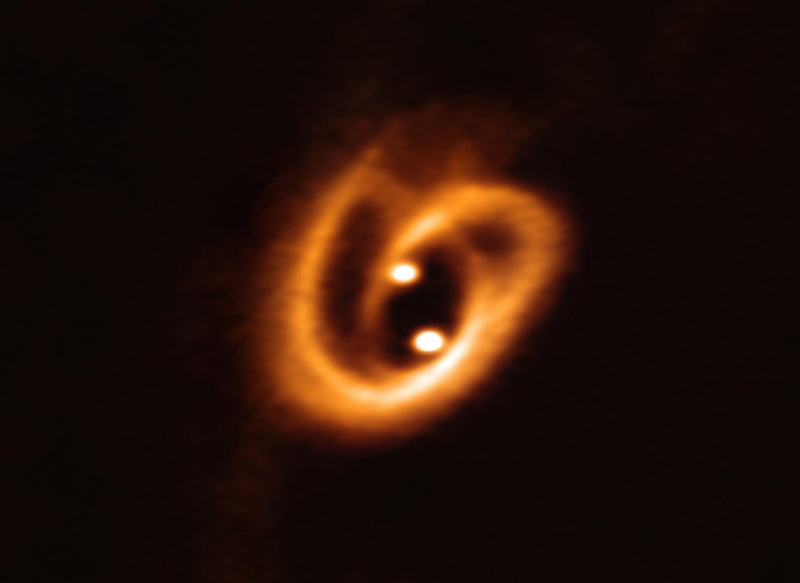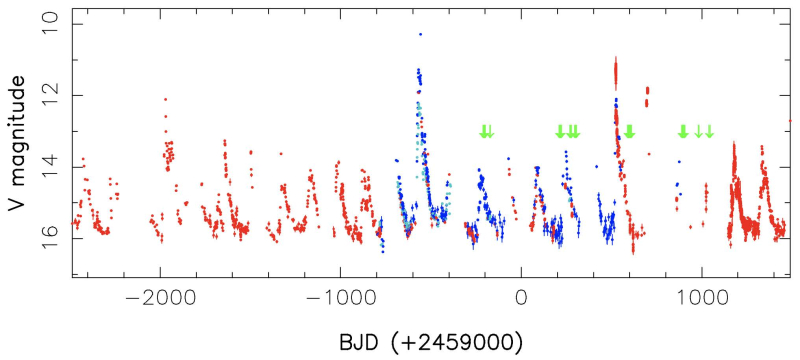SPIRou decodes the bursts of a protostar
A research team at IRAP (CNRS Terre & Univers, Université de Toulouse III & CNES) has just deciphered the origin of periodic light bursts from the protostar V347 Aurigae in the constellation of Auriga, attributed to the presence of a brown dwarf companion. To obtain this result, they used the SPIRou instrument on the Canada-France-Hawaii telescope, atop the Maunakea volcano on the Big Island of Hawaii.
V347 Aurigae is a protostar only a few hundred thousand years old, a baby of just a few days if we compare the lifespan of such a star with that of human life. Located in the constellation of Auriga, V347 Aur is visible in the winter sky around Christmas time. For some years now, this protostar has been attracting astronomers’ attention for its regular, lighthouse- or tinsel-like bursts of light, which can temporarily make it up to 100 times brighter.
By observing this object for more than 3 years with SPIRou, the exoplanet hunter assembled at IRAP and installed at the Canada-France-Hawaii telescope, a team of researchers was able to show that these luminous bursts are due to the presence of a young companion 10 times less massive, a brown dwarf about 30 masses of Jupiter, in orbit around V347 Aur. This brown dwarf describes an ellipse around V347 Aur, causing the two bodies to move towards and away from each other every 155 days, triggering instabilities in the disk of matter that envelops and feeds the nascent binary system.

During these episodes, the destabilized disk material falls onto V347 Aur, which temporarily becomes up to 100 times brighter. SPIRou is also a spectropolarimeter that can map the magnetic field of stars using tomographic techniques inspired by medical imaging. The team was thus able to reconstruct V347 Aur’s magnetic field and its temporal evolution, and show that it too fluctuates every 155 days, suggesting a magnetic cycle comparable in nature to the Sun’s well-known dynamo cycle, but much faster and caused by V347 Aur’s orbital motion, hence the name ‘pulsating dynamo’ proposed for this original mechanism.
This result is a perfect illustration of SPIRou’s ability to decipher the complex physical mechanisms involved in the birth of stars and planets, and for the detailed study of which it was designed.

CNRS Laboratories involved
- Institut de Recherche en Astrophysique et planétologie (IRAP – OMP)Tutelles : CNRS / CNES / Univ.Toulouse III Paul Sabatier
- Institut de planétologie et d’astrophysique de Grenoble (IPAG – OSUG)Tutelles : CNRS / UGA
Further Resource
- Scientific paper : J -F Donati, P I Cristofari, A Carmona, K Grankin, SPIRou monitoring of the protostar V347 Aur: binarity, magnetic fields, pulsed dynamo, and accretion, Monthly Notices of the Royal Astronomical Society, Volume 534, Issue 1, October 2024, Pages 231–250
IRAP Contact
- Jean-François Donati, jean-francois.donati@irap.omp.eu






